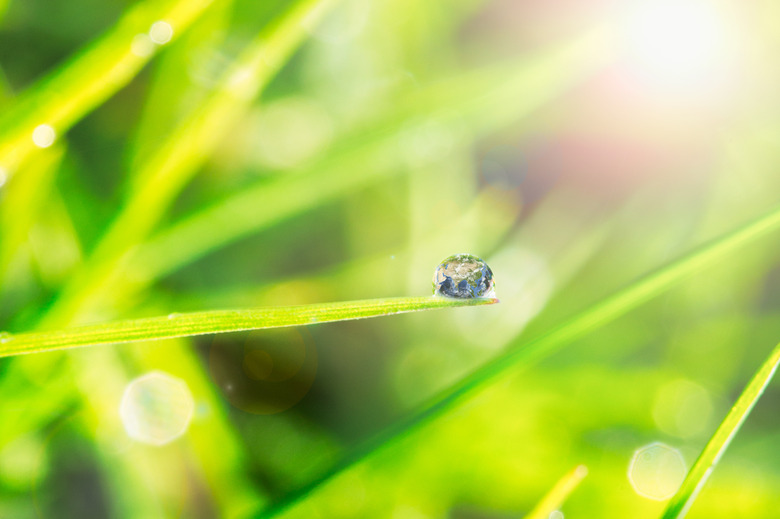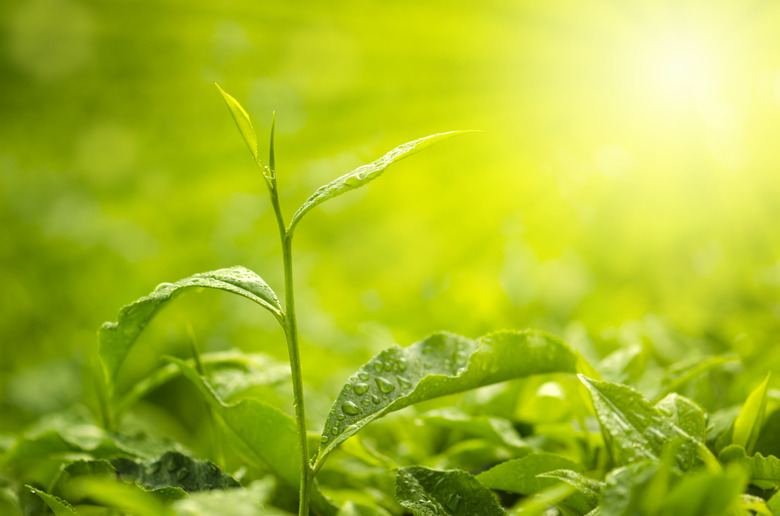How Does Photosynthesis Work In Plants?
You know that plants make their own food through photosynthesis, but how does it really work? Using just sunlight, water and carbon dioxide, plants make carbohydrates to fuel their growth. The process of photosynthesis originated on this planet over three billion years ago, according to PennState – but scientists still have a lot to learn about all the steps involved in this complex process.
Humans have been studying photosynthesis since the 1600s, when it was partially discovered by Jan Baptista van Helmont, a Belgian chemist, notes Photosynthesis Education. In the 400 years since then, many scientists have contributed to the understanding of how oxygenic photosynthesis works in plants.
The Process of Photosynthesis
The Process of Photosynthesis
The simplified formula for oxygenic photosynthesis is 6CO2 + 6H2O + light energy → C6H12O6 (glucose) + 6O2, but there's much more to this biochemical process than this basic equation. What's not included in the formula are the specialized cell structures and the steps involved in converting carbon dioxide and water into sugars that plants can use as food.
Plants need chloroplasts, which are organelles, for the process of photosynthesis. Chloroplasts are the places where photosynthesis happens, and all the cells of the green parts of plants contain chloroplasts. Within the chloroplasts is the pigment that absorbs sunlight and makes plants green, which is called chlorophyll. Most photosynthesis occurs within plant leaves, according to UC Berkeley.
There are several steps involved in photosynthesis, and they occur in two stages. The first stage contains the light-dependent reactions, and the second has the light-independent reactions, according to Biology(OpenStax'>Biology LibreTexts/2%3A_The_Cell/08%3A_Photosynthesis/8.1%3A_Overview_of_Photosynthesis). Another term used for the light-independent reactions is the Calvin cycle.
The Two Stages of Photosynthesis
The Two Stages of Photosynthesis
During the first stage of photosynthesis, the light-dependent reactions, chlorophyll absorbs energy from sunlight. Water is split with this energy from the sun, which produces oxygen, adenosine triphosphate (ATP) and nicotinamide adenine dinucleotide phosphate hydrogen (NADPH).
The second stage of photosynthesis, the Calvin cycle or light-independent reactions, uses the products of the first stage to make sugars to feed the plant. Carbohydrates are produced during this stage by combining NADPH with CO2, a process that requires ATP and enzymes. These carbohydrates are the food that plants use to maintain, repair and grow cells.
Although the second stage of photosynthesis is sometimes called the light-independent reactions, it can't happen without the products of the light-dependent reactions. In other words, the Calvin cycle can only occur after the light-dependent part of the process of photosynthesis.
The Evolution of Photosynthesis
The Evolution of Photosynthesis
Along with producing food for plants, the process of oxygenic photosynthesis also creates oxygen, which is released by plants into the environment. This oxygen makes Earth habitable for humans and other life forms, making the planet different from the others in the solar system.
Interestingly, plants and algae are not the only organisms that can make their own food through photosynthesis. Some bacteria, called cyanobacteria, also use oxygenic photosynthesis to feed themselves, and they are likely the evolutionary ancestors of modern-day plants and algae, according to Caltech.
There are also bacterial organisms that make their own food through the process of anoxygenic photosynthesis, but this method of photosynthesis does not produce oxygen. Organisms that can photosynthesize are called photoautotrophs, which means "self-feeders using light."
Although photosynthesis has been happening on the planet for billions of years, the understanding of the process and its origins is still developing. Scientists continue to build on the work of their predecessors, adding pieces to the puzzle of photosynthesis and creating a fuller picture of this complex process that is essential not only to photoautotrophs but also to all life on Earth.
Cite This Article
MLA
Sloane, Christina. "How Does Photosynthesis Work In Plants?" sciencing.com, https://www.sciencing.com/photosynthesis-work-plants-5479729/. 30 September 2021.
APA
Sloane, Christina. (2021, September 30). How Does Photosynthesis Work In Plants?. sciencing.com. Retrieved from https://www.sciencing.com/photosynthesis-work-plants-5479729/
Chicago
Sloane, Christina. How Does Photosynthesis Work In Plants? last modified March 24, 2022. https://www.sciencing.com/photosynthesis-work-plants-5479729/

